Hostilities can resume. The arrival of the new Audi TT S on British roads calls for the continuation of a contest that will interest a great many sports car fans and that began in Autocar last autumn.
So now that what ought to be the definitive version of the TT is filtering into UK showrooms, who makes the best £40k German sports coupé?
Act one of this story concluded quite memorably back in November. The lesser 227bhp turbocharged 2.0-litre TT ran a BMW M235i close enough to suggest that when Ingolstadt’s bigger-hitting compact coupé pitched up – complete with the engine and driveline from a Volkswagen Golf R, no less – Munich’s muscle-bound 2 Series could be in real trouble.
We liked the TT S very much on first Continental acquaintance with it even earlier last year, when it showed the kind of alacrity and balance in its handling that very few of Audi’s fashionista coupés have ever possessed. But back then, expectations of the Audi as a driver’s car were understandably low. A full road test of the Audi TT has since confirmed that this is indeed a more engaging and dynamically well- rounded machine than either of its predecessors.
Read the full Audi TT S review
Time to ask the ultimate question, then. Today, there will be no adjournments and no excuses – and there is not only a BMW to beat but also our long-time standard-bearing coupé for driver appeal: the Porsche Cayman. Knowing the previous TT, you may think that trumping both is an unrealistic challenge to set the Audi – and that may yet prove to be true for the new version. But it certainly shouldn’t be.
Less than £4000 separates these three cars on list price. Moreover, with our residual value experts suggesting that the market will bring the cars even closer together for those buying on contract, they can be considered to be well and truly on the same shopping list. For now, the TT S trumps even the Cayman on forecast retained value over a typical ownership period.
Next, an admission. The roles that the TT and M235i are intended to serve are subtly but significantly different from that of the Cayman, but, if anything, that fact will help us over the next few pages. In order to win, the Audi will need to be as broad- batted, usable and obliging over long distances as the other ‘performance coupé’ standing in its way: the BMW. Simultaneously, it’ll need to be a match for the ‘sports car’, the Porsche, on dynamic poise and engagement.
The newbie doesn’t start in a bad place. Despite being two cylinders down on its rivals, the Audi has the best power-to-weight ratio here. Quattro drive makes it quick off the mark as well. Had we been supplied with perfectly matched two-pedal automatic test cars for this exercise, the TT S would have the quickest 0-62mph claim by a couple of tenths of a second. Wider use of aluminium and other lightweight materials has brought the Audi’s kerb weight to within 35kg of the two-seat Cayman’s.
It also delivers a key performance advantage over the relatively portly M235i, in spite of the BMW’s distinguishing power and torque outputs. To BMW and Audi drivers, you suspect, bragging rights are not unimportant. Meanwhile, relatively modest outputs mean that Cayman drivers will have little to brag about apart from the Porsche crest on their keyring.
Read the full BMW M235i review
The Audi’s shrink-wrapped, compact looks and ground-hugging stance contrast as starkly with the BMW’s more old-school three-box shape as they do with any other car on the road. There seems little point debating which is the better- looking car of the two, since they’re so different. Traditionalists and modernists will inevitably be drawn to either side of the argument. Handily, the elegant Cayman makes the comparison redundant anyway, because it’s the best-looking and most desirable car of our three by a distance. Natch, Porsche.
But on usability and cabin quality, the TT claws back its early advantage. As we’ve written before, the Audi’s interior has a brilliantly judged and executed mix of material richness and technological sophistication. It’s architecturally and ergonomically daring but comfortable with it and, but for a few places, easy to use. It looks and feels not just more expensive than the M235i but also infinitely more special, the BMW showing its junior executive car roots through its broadly pleasant and solid but straight-jacketed fittings.
The Cayman’s interior, too, is made to look dated and even a little cheap in places by the brilliant Audi. The Cayman’s driving position is best, followed closely by the TT’s, while the M235i’s feels precariously high.
But there’s no mistaking the considerable difference between the Porsche and its competition on practicality. This is sports car versus performance coupé, remember. No amount of underbonnet storage space would make up for the Cayman’s lack of rear seats on occasions when you had need of one. Likewise, its refusal to swallow bulkier items such as bicycles or big suitcases could offend.
Although it has a bigger boot and bigger back seats than the Audi, even the BMW is beaten on practicality by the TT’s ultra-convenient hatchback and easily flipped rear seatbacks. Lucky for the BMW, then, that everyday usability has more to do with the temperament and civility of a car than its mere capacity to carry.
It’s here, in mixed real-world use, that the M235i – which has barely made an impression in this comparison thus far – begins to show its strength. There is a breadth and range to the BMW’s dynamic character that the Audi fails to match and that you simply wouldn’t expect from a car like the Porsche.
Around town and on the motorway, the BMW is the most comfortable car of the three. There is quiet compliance in its ride, good road noise suppression in its cabin and suaveness from its engine when you go looking for it. Such things matter, because they’re the heart and soul of a talented grand tourer. More than anything else, they make you inclined to use your car every day, for every journey and purpose you can imagine it serving. And the truth is that the M235i can do it all: urban rush hour, a relaxing cruise or a pacey cross-country excursion. You can enjoy the muscularity of its engine and the meatiness of its controls at any time.
The TT S feels instantly firmer- riding and more direct than the BMW – shorter in its suspension travel, more eager to convince you of its sporting intent. Over a bad surface, the suspension can thump and jar in a fairly uncouth way. But its body control is always strong and its handling response likewise – better in both cases, believe it or not, than the M235i.
Read the full Porsche Cayman review
The TT S wants to be driven quickly or not at all. Its steering is fast-paced but also light, its gearlever and clutch equally undemanding. Everything about the car, barring the short gear ratios, is set to make a fast stride easy to hit and easy to maintain.
Grip levels are high and very little marginal lateral impetus is wasted in body roll during hard cornering. Set up to be secure, the car doesn’t quite dive into bends, but guiding it towards an apex and onwards down the road is absurdly easy. Leave your braking late as you approach and the TT shows its biddable side as you bleed off the pedal and turn in, pointing its noise gamely inwards. Then pick up as much power as you like, as early as you like. The four-wheel drive system keeps the front wheels on course, there’s loads of lateral grip available to carry the speed, the suspension makes short work of any mid-corner disturbances you chance across, and the one thing you can be sure of is throttle-on stability.
That, in the strictest terms, is how a TT S goes about outhandling an M235i on a testing B-road. It may be less charming and more one- dimensional than the BMW, but it’s a clear lesson to Munich on close body control, steering precision and predictability – of simply going where you point it.
The M235i has a better engine than the TT S, and it’s the better drive up to about a seven-tenths effort level. Up to that point,it flows more fluently between corners and over bumps than the Audi and feeds back information to your fingertips in more detail.
But beyond that point, the BMW’s hold on the road and its ability to keep its body movements in check both begin to fade. The suspension is too easily flummoxed by sudden topography changes, too often caught out and set bobbing over its rear axle, the consistency of its grip levels suddenly undermined.
Bottom line: the M235i isn’t well damped enough for very fast road driving, and waiting for the body to settle in any given corner before you engage the driven rear wheels can be frustrating. When you do, the car also has too great a liking for power-on understeer than truly suits a BMW performance machine.
But the fact remains – to some extent because of its dynamic faults rather than in spite of them – that the M235i is a more rewarding car to drive than the TT S. The Audi is hugely competent, but its dynamic allure isn’t nearly as long-lasting. An hour of Need For Speed-aping, supremely easy cross-country driving tells you everything you’ll ever know about the TTS’s capacities. By that stage, you’d still be teasing and cajoling the BMW, long since disappeared from the Audi’s rear- view mirror, trying to find the perfect style and pace to maximise your confidence in the car and your enjoyment of it. The last of those, I suspect, would end up comfortably outstripping that of the TT, but the M235i will only ever give back what you’re prepared to put in.
There’s no such need to probe away for hours at the wheel of a Cayman. Within three corners, the mid-engined machine sets itself miles apart from the Audi and BMW on poise, precision and interactivity. And if that sounds like a footnote within the broader narrative sway of this story, so it should. You’d have read about this car in far greater detail by now if the TT S had ever even looked like approaching the Porsche’s lofty mark on handling panache. But the truth is that however improved it may be, the Audi remains a prosaic and textureless kind of sports car, and the BMW a more diverting but dynamically imperfect one, in the dazzling light that the Cayman throws out.
Although it’s armed with less of everything – power, torque, speed, grip and roll stiffness – the Cayman does more. Initial steering response is cleaner, cornering balance is infinitely sweeter and the delicacy of your control over the path of the car is acute and wonderful. The visceral last 1500rpm of the flat six’s repertoire make the 5000 revs immediately before worth having. All up, the Cayman’s driving experience is totally immersive, whereas the TT’s and the M235i’s are only partly so.
The verdict
A surprisingly pliant ride, decent fuel economy, two reasonable boots and a generous-sized fuel tank make the Cayman a surprisingly usable sports car – but it’s a sports car nonetheless. It wins this test because it’s easily the most intoxicating car here to drive, and that’ll always clinch an Autocar verdict where performance cars are involved.
But losing to the Porsche won’t ruffle many feathers for the TT’s creators. Losing so narrowly to the M235i, despite having done enough to outclass its key competitor on cabin ambience, performance, practicality and handling precision, will rankle – but that, despite the preamble to this story, is where we’ve ended up. The TT has come a long way but evidently still has some maturing to do before it can maintain the interest of people keen to look past esoteric design and bald performance numbers for the soul of a true driver’s car underneath.
Read Autocar's previous comparison - Land Rover Discovery Sport versus SUV rivals
Porsche Cayman
Price £39,964; 0-62mph 5.7secs; Top speed 165mph; Economy 33.6mpg; CO2 192g/km; Kerb weight 1405kg; Engine 6-cyls horizontally opposed, 2706cc, petrol; Power 271bhp at 7400rpm; Torque 214lb ft at 4500-6500rpm
BMW M235i auto
Price £36,080; 0-62mph 4.8secs; Top speed 155mph; Economy 37.2mpg; CO2 176g/km; Kerb weight 1545kg; Engine 6-cyls in line, turbocharged, petrol; Power 322bhp at 5800-6000rpm; Torque 332lb ft at 1300-4500rpm
Audi TT S
Price £38,790; 0-62mph 4.9secs; Top speed 155mph; Economy 39.8mpg; CO2 164g/km; Kerb weight 1440kg; Engine 4-cyls in line, 1984cc, turbocharged, petrol; Power 306bhp at 5800-6200rpm; Torque 280lb ft at 1800-7500rpm
Get the latest car news, reviews and galleries from Autocar direct to your inbox every week. Enter your email address below:

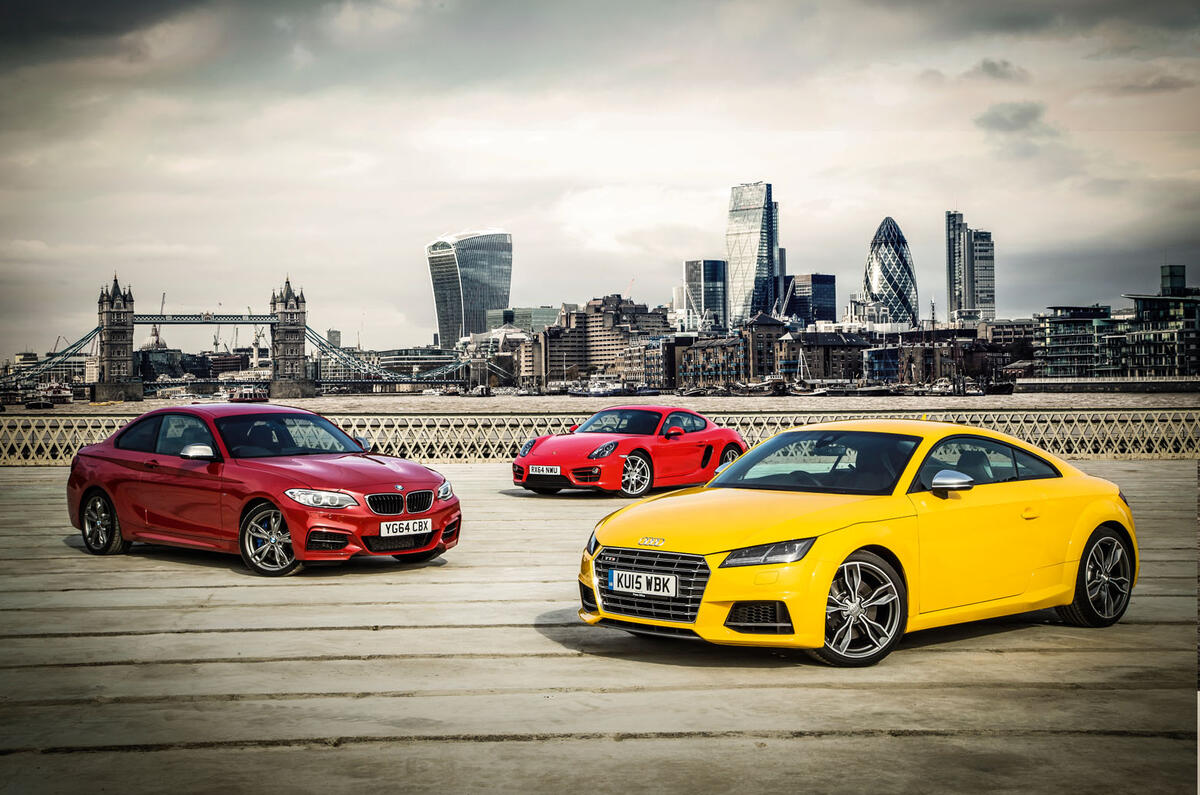
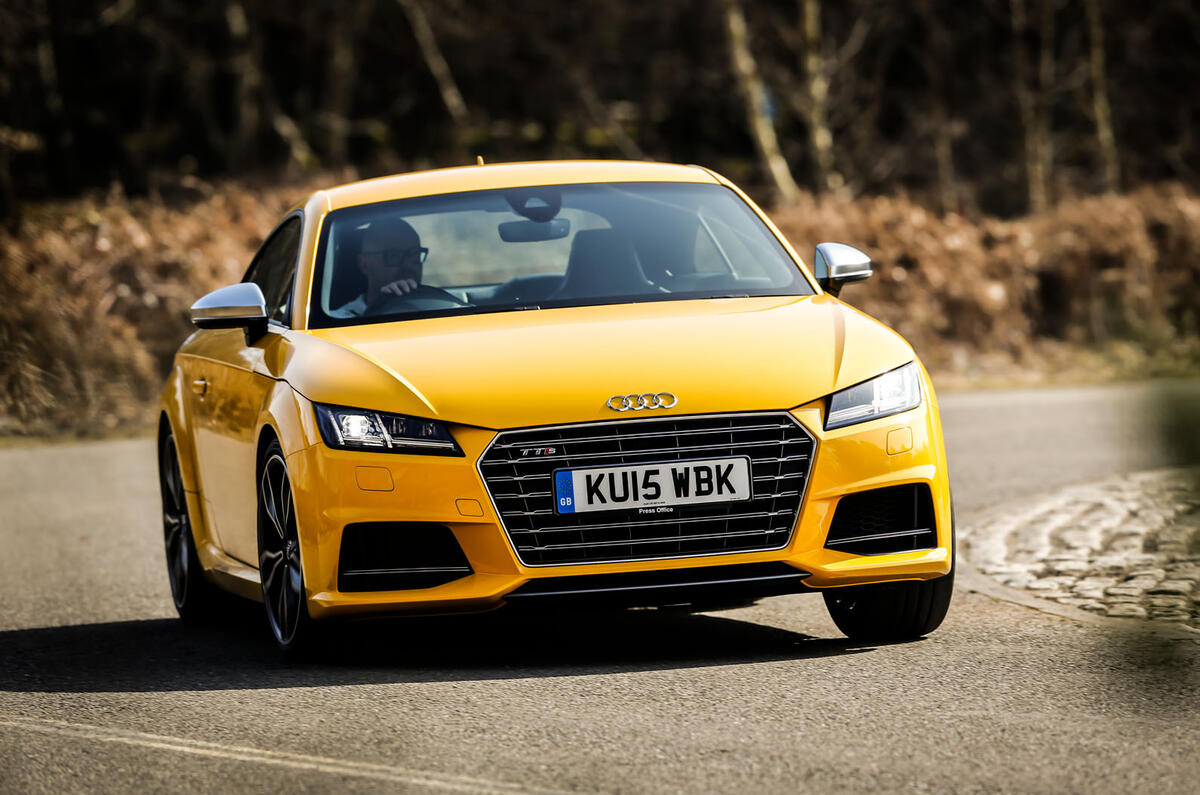
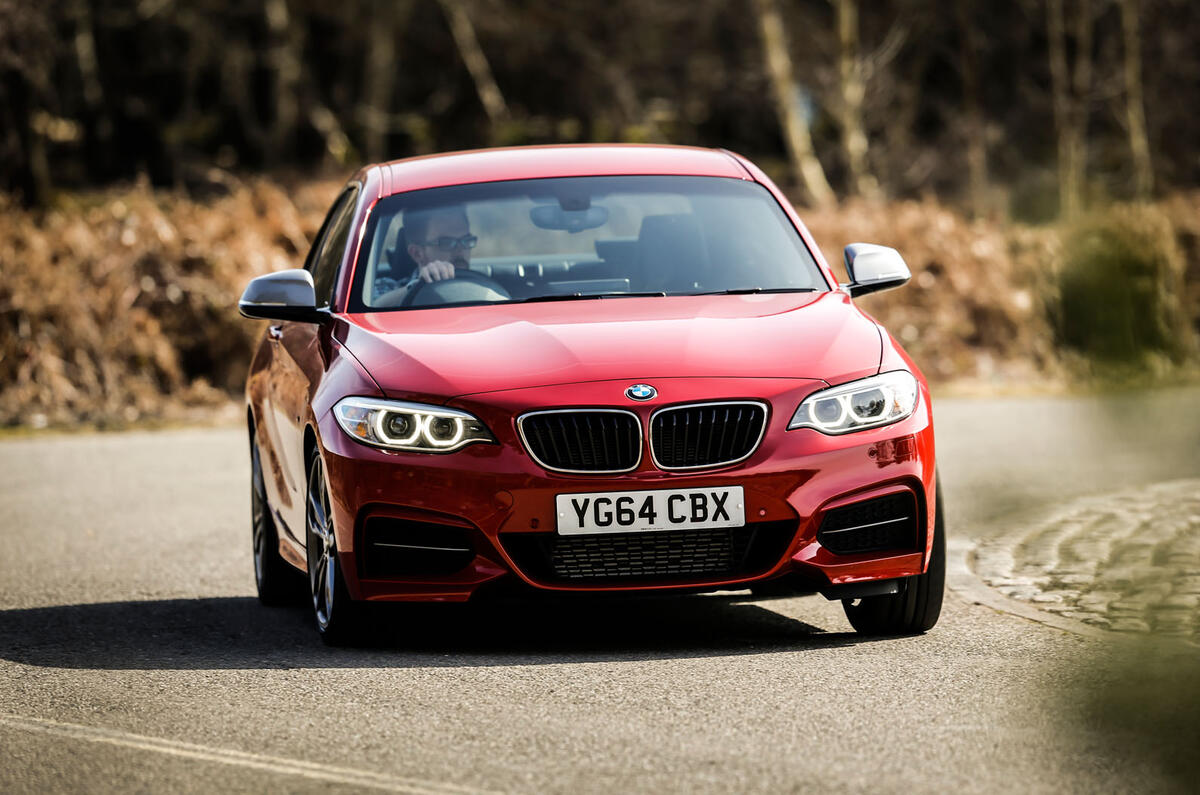
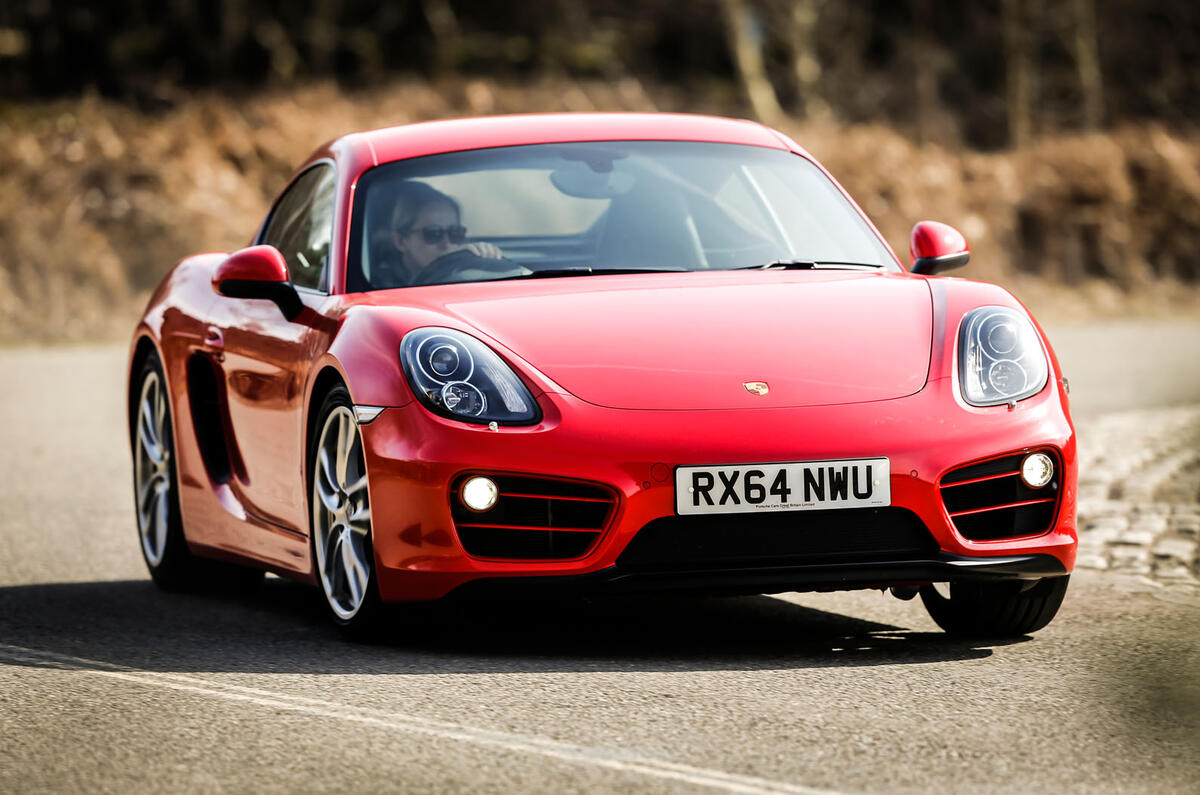
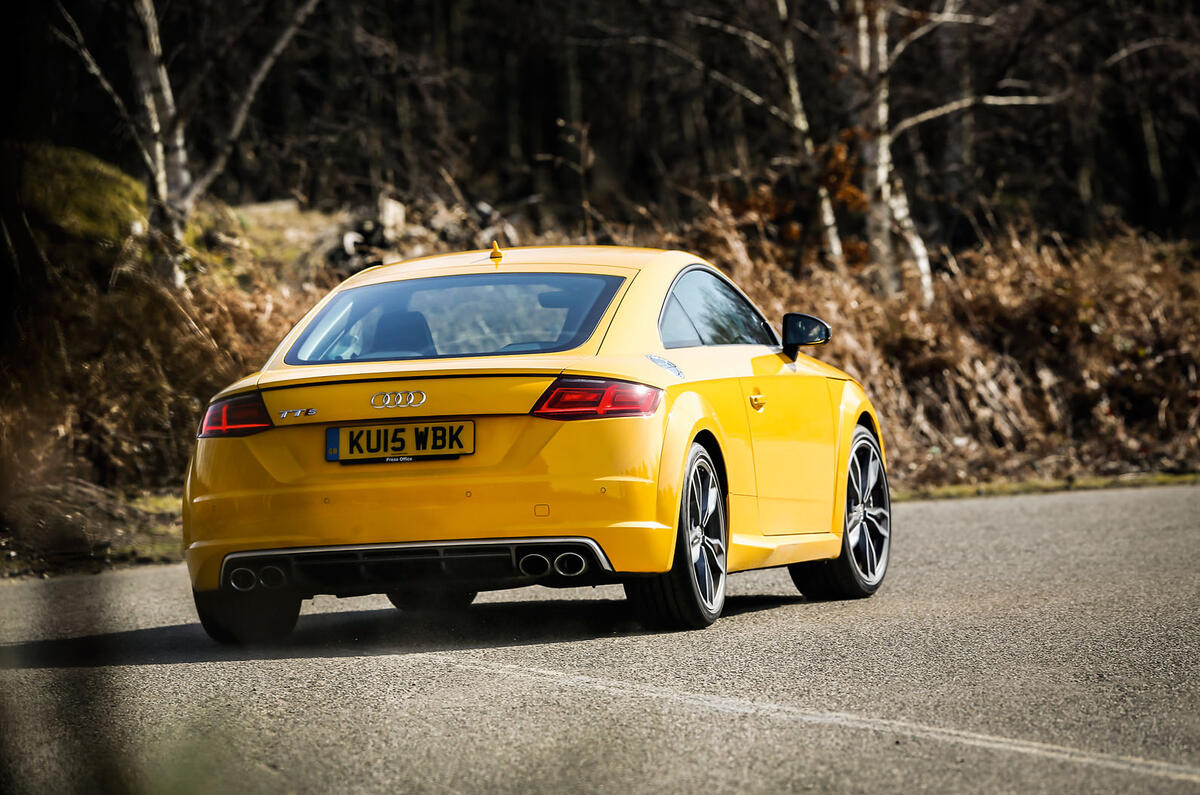
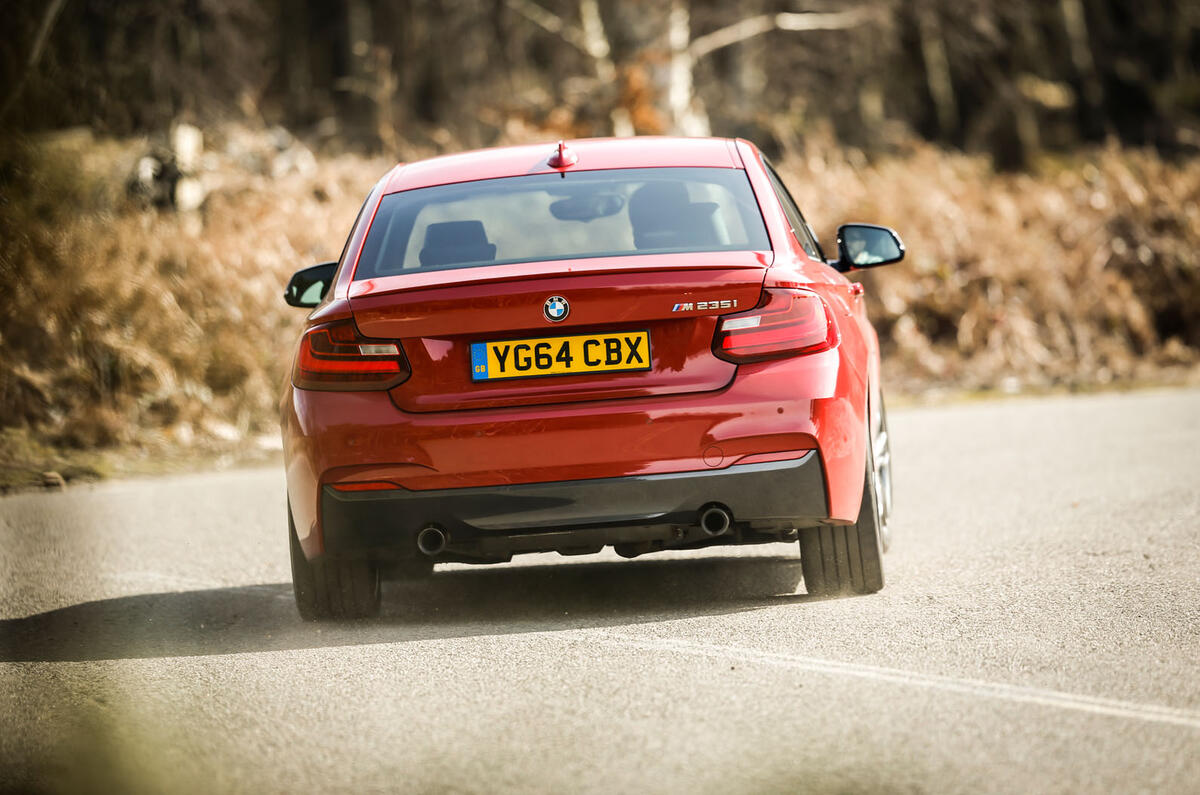
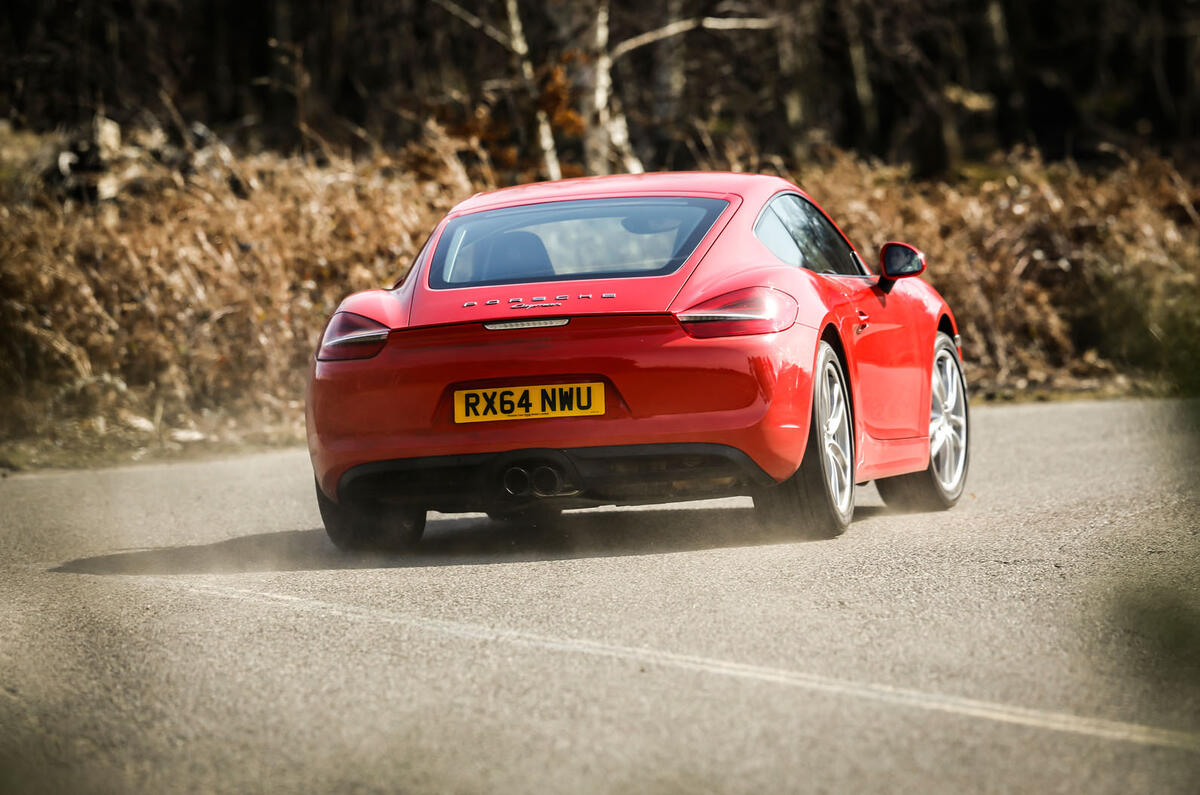
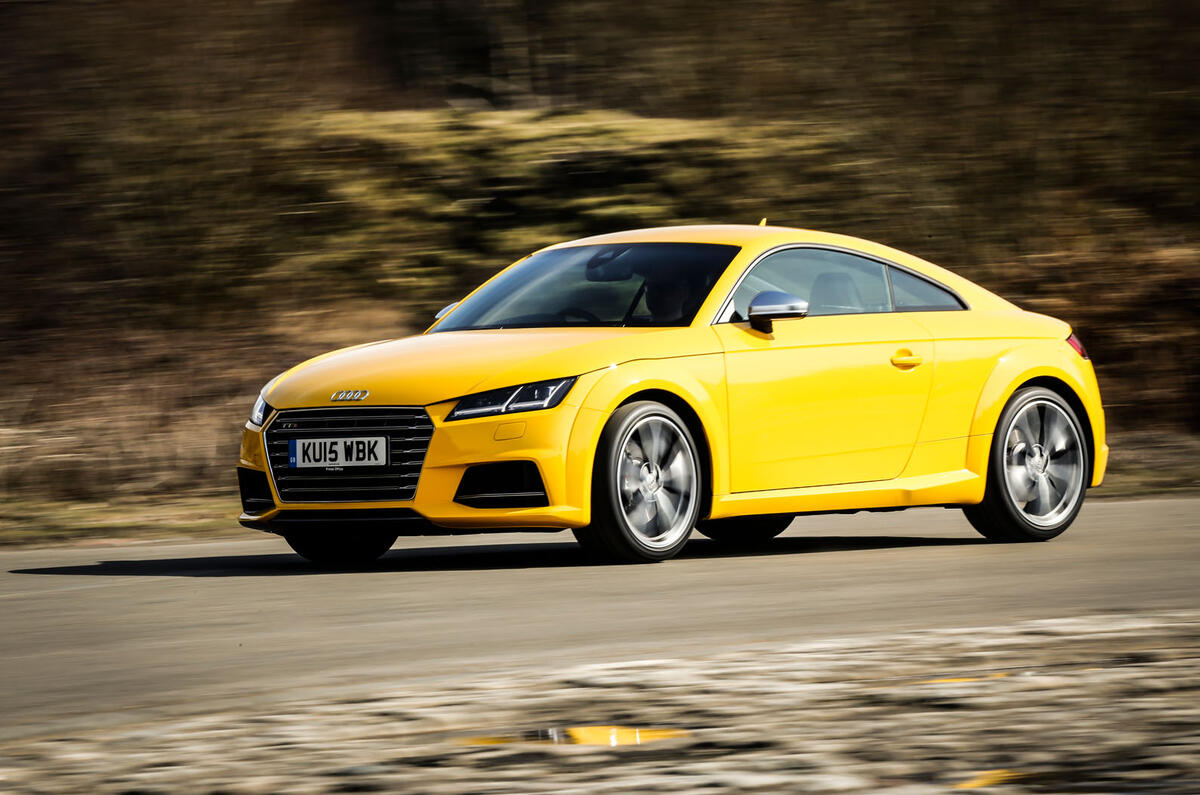
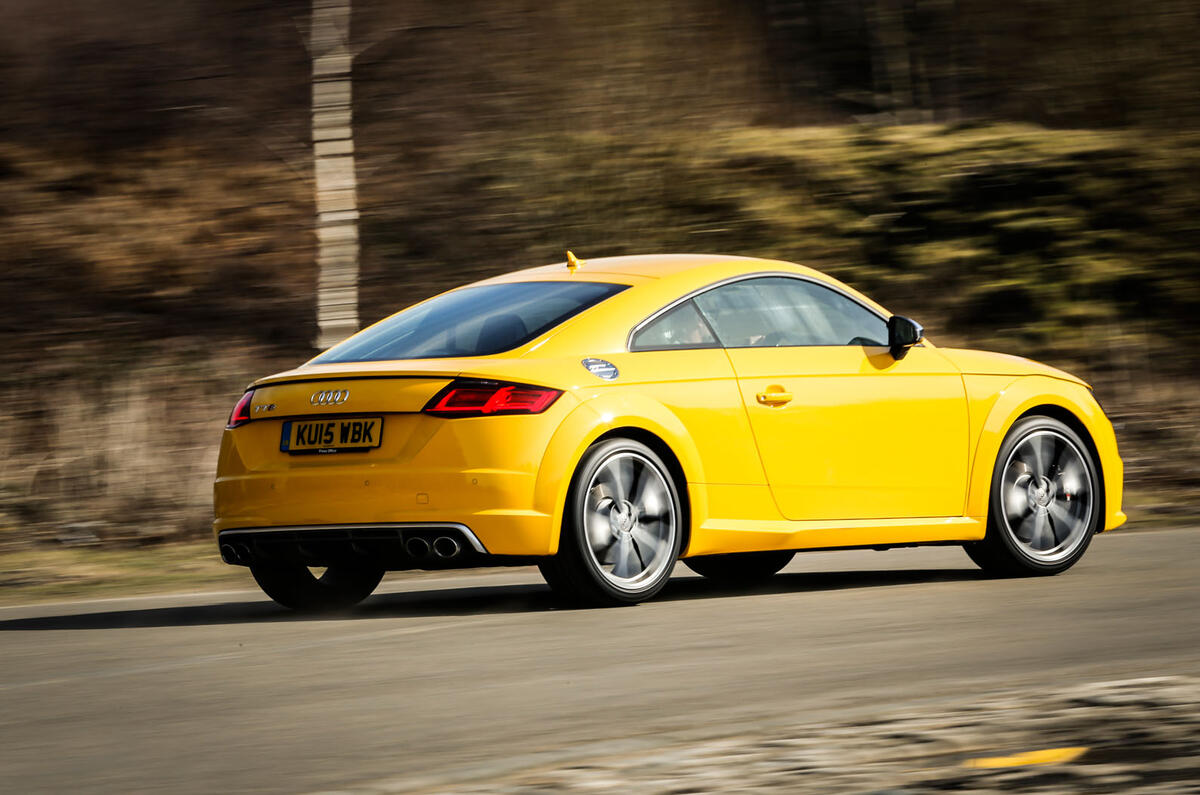
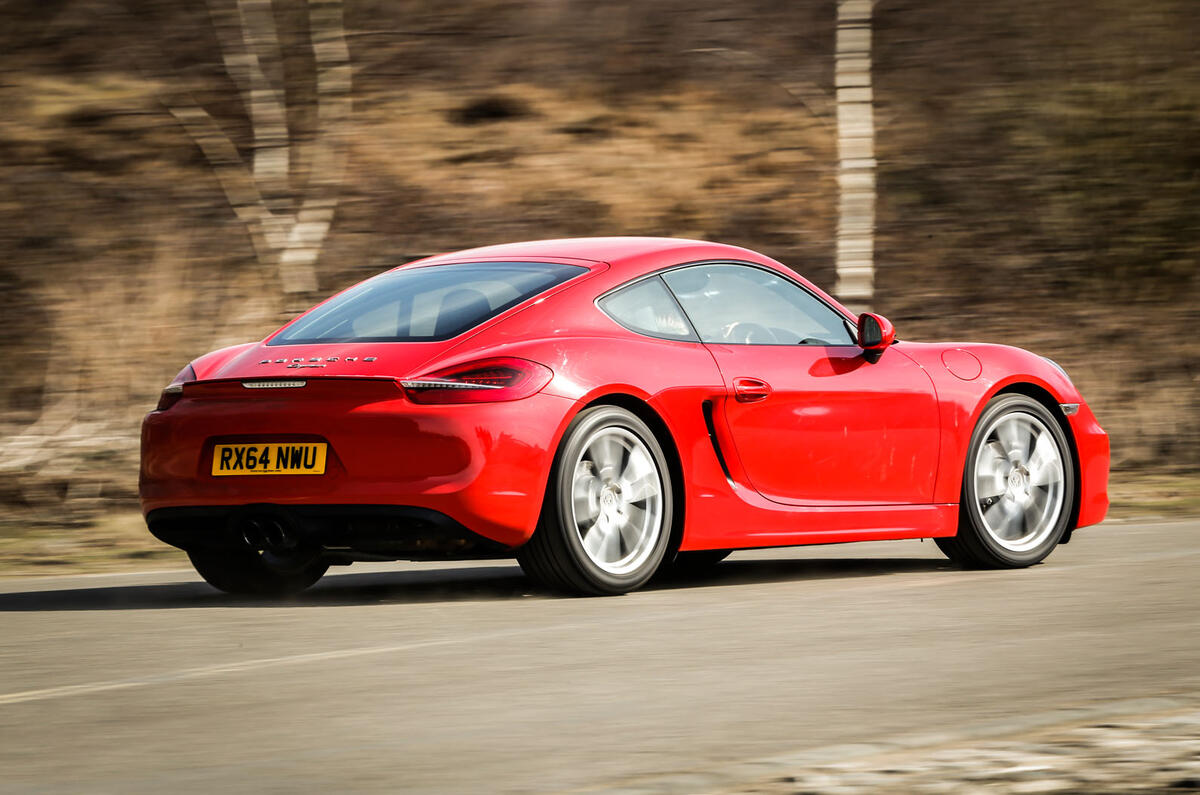
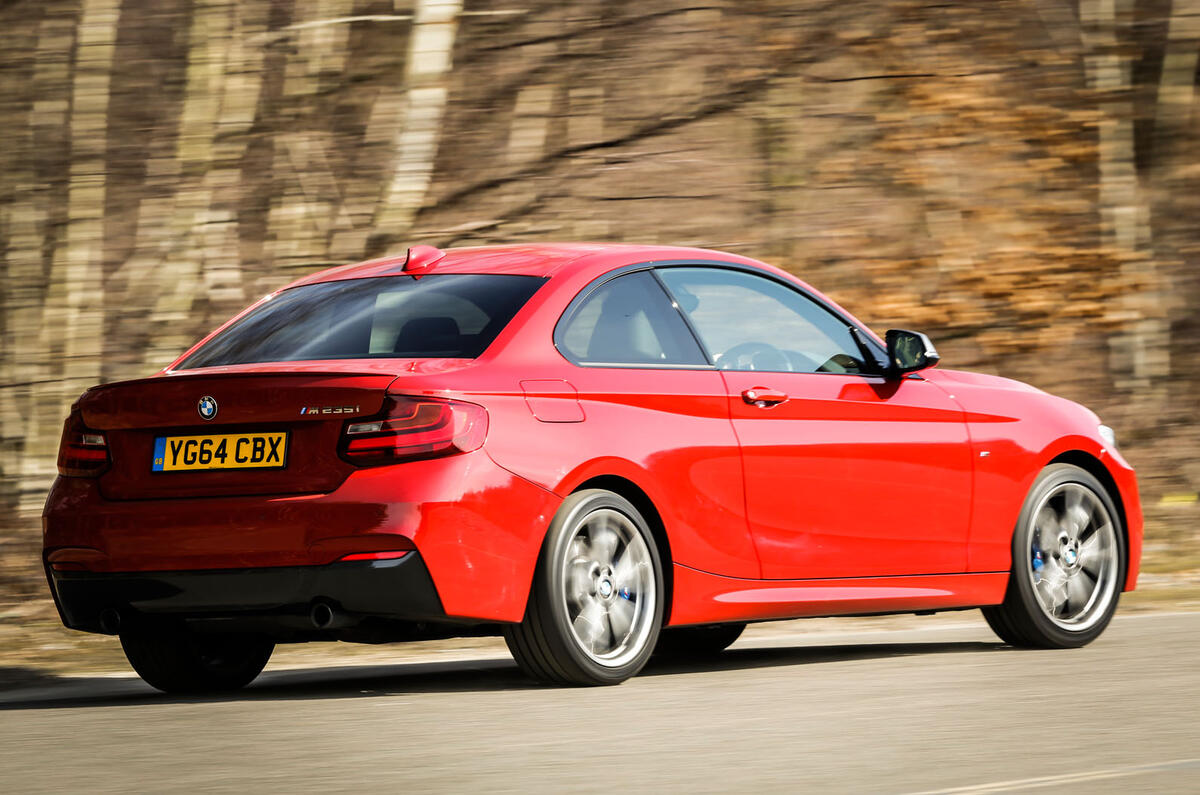
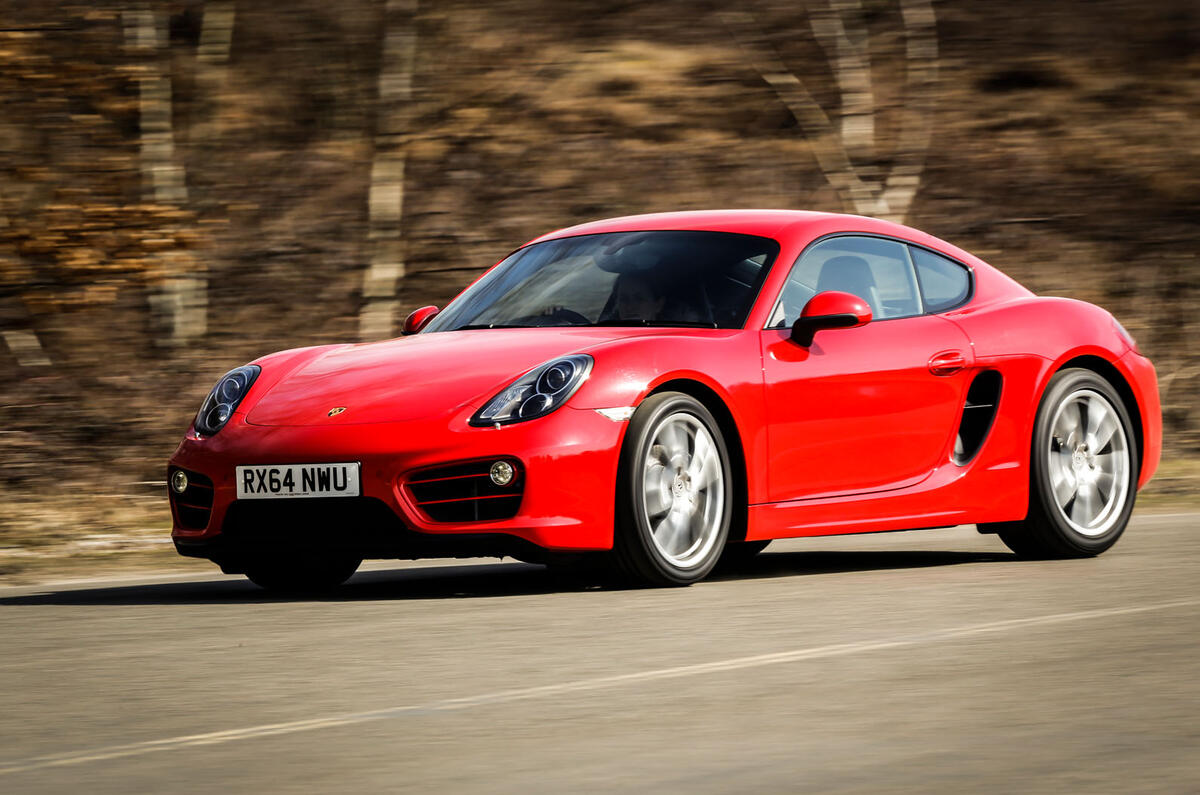
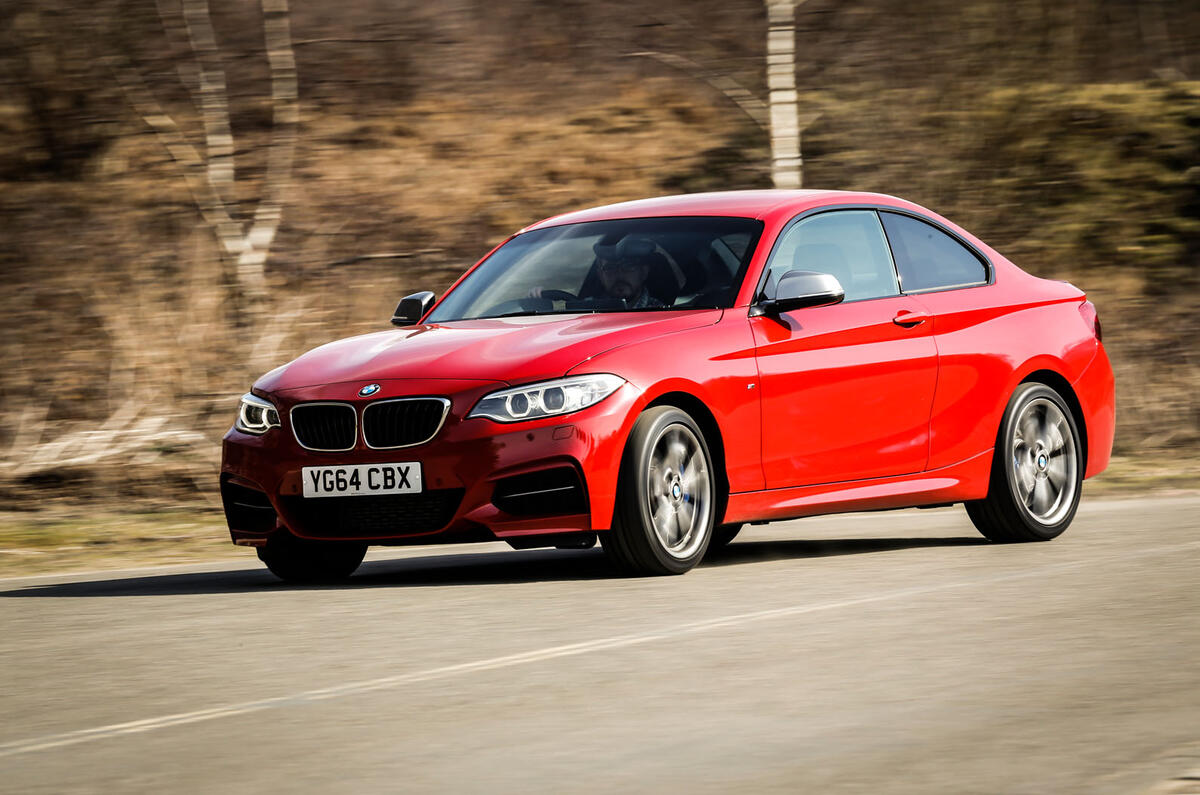
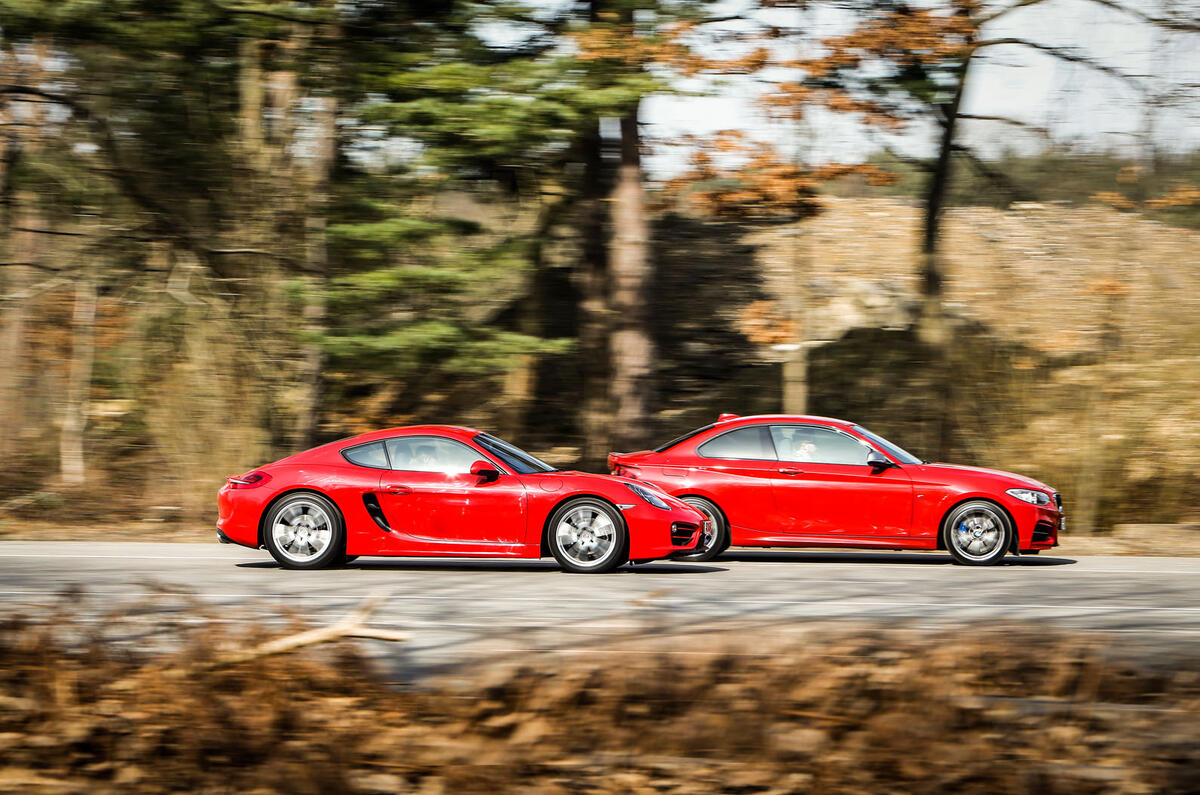
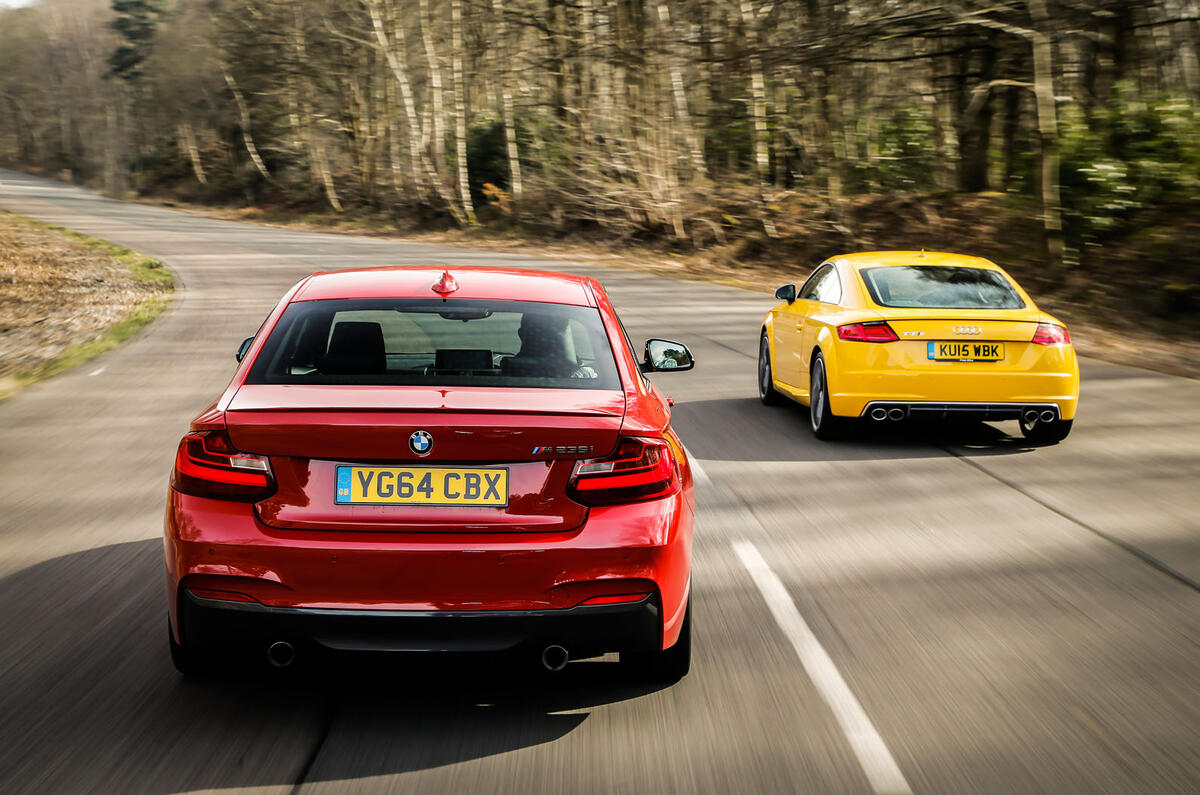
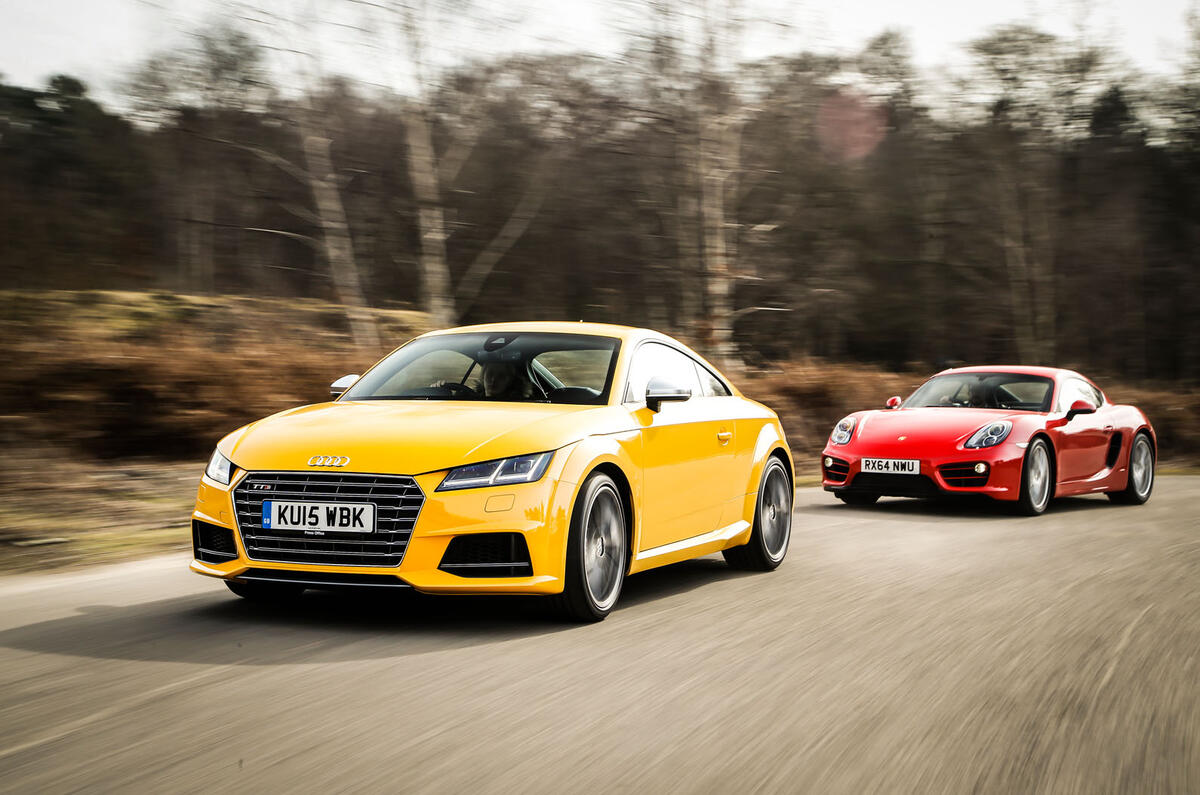
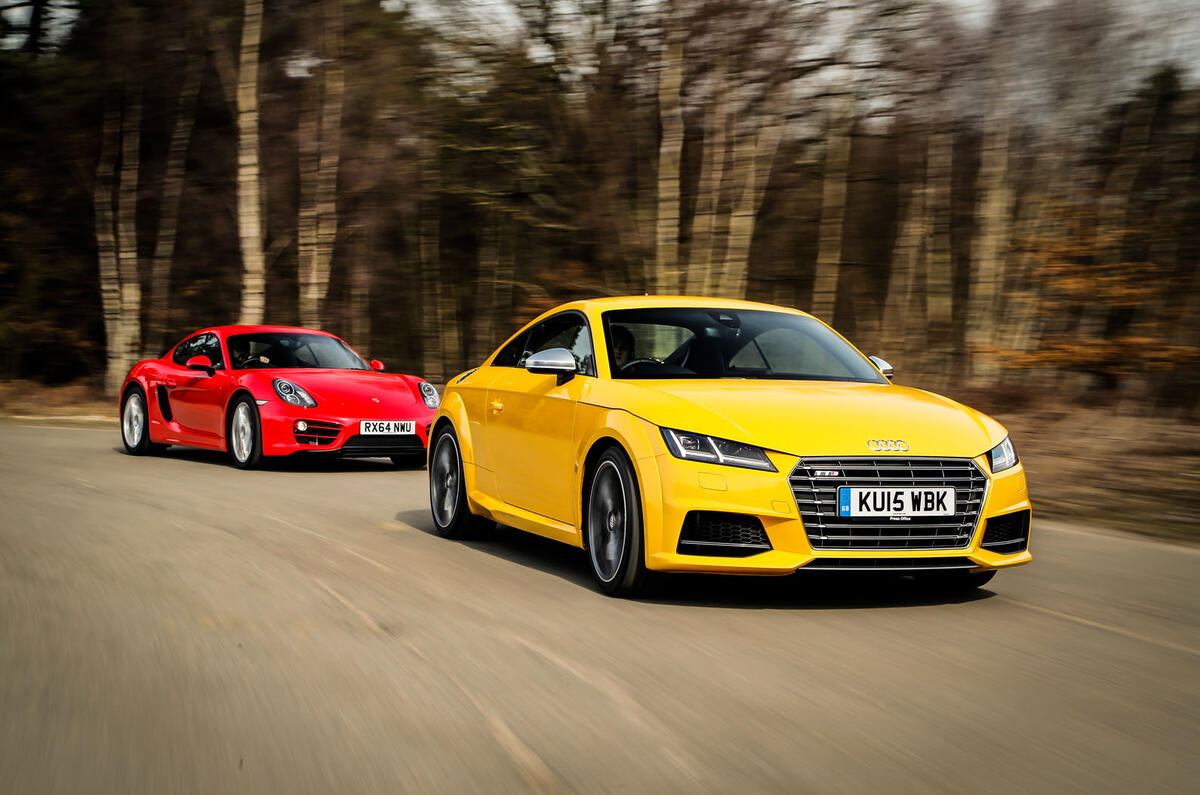
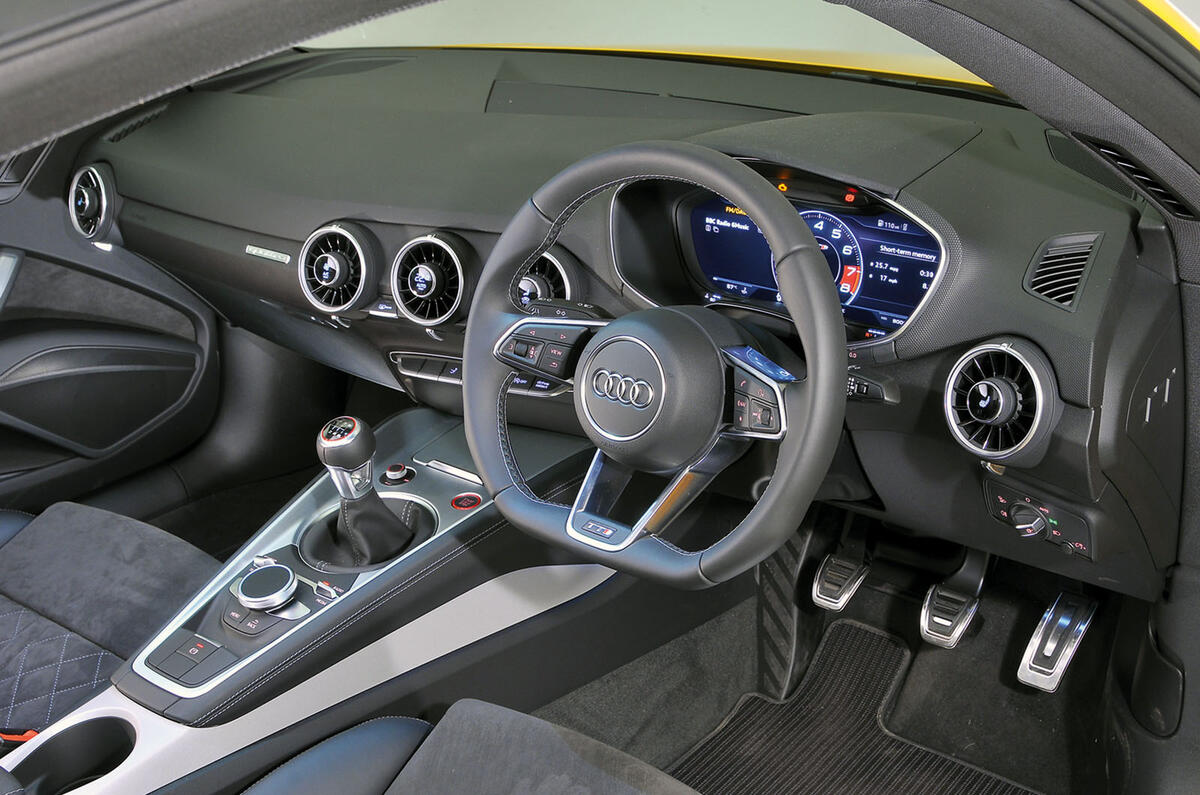

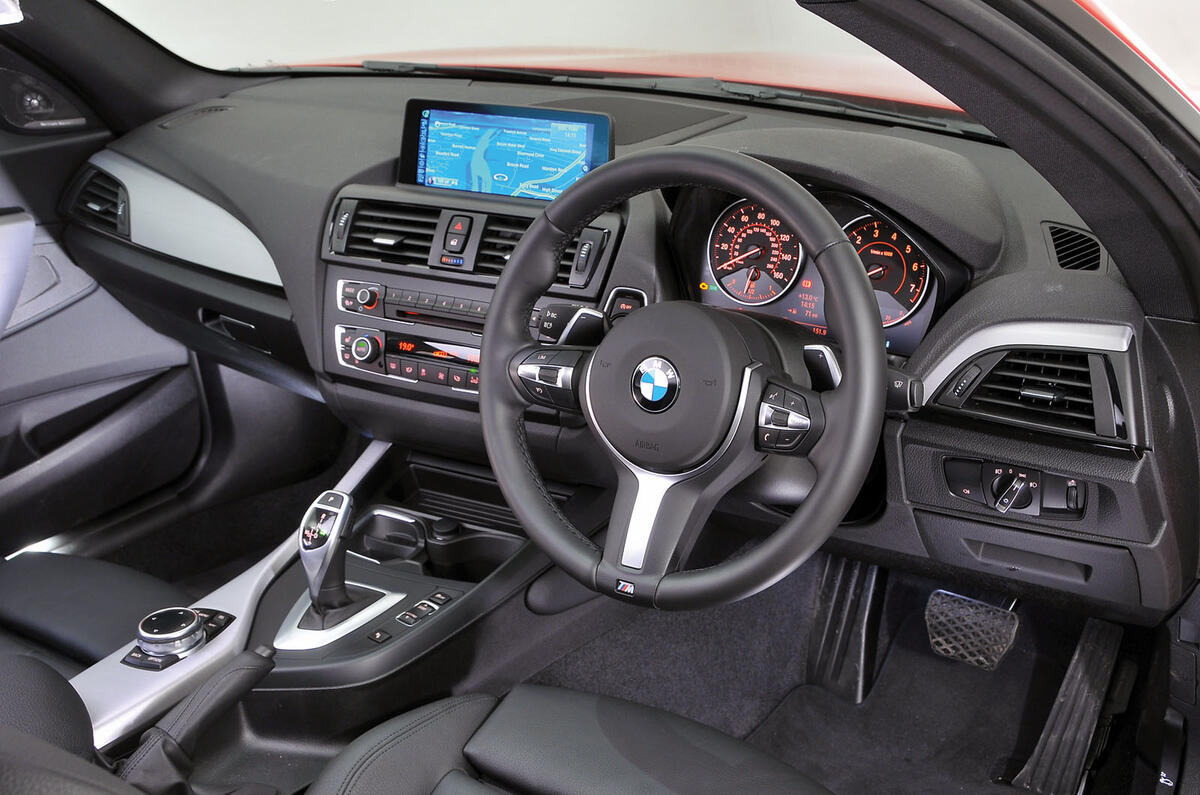

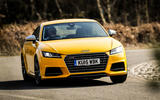
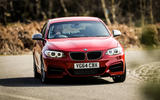

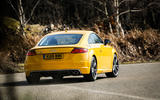
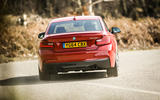
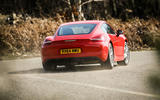
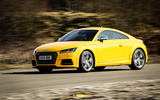
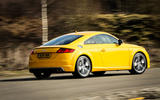

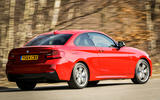

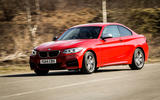

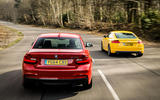
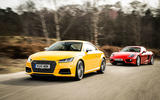
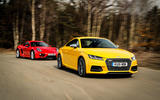
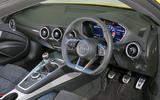
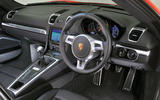
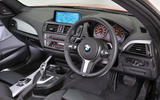






Join the debate
Add your comment
Usual anti-TT bias from the UK
I don't know. This sounds
If by the author's own